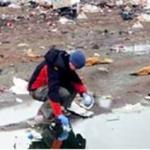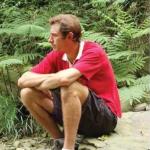Developing capacity for planning and adapting to riverbank erosion and its consequences in the Yukon River Basin
Navigating the New Arctic (NNA) is one of NSF's 10 Big Ideas. NNA projects address convergence scientific challenges in the rapidly changing Arctic. The Arctic research is needed to inform the economy, security and resilience of the Nation, the larger region and the globe. NNA empowers new research partnerships from local to international scales, diversifies the next generation of Arctic researchers, enhances efforts in formal and informal education, and integrates the co-production of knowledge where appropriate. This award fulfills part of that aim by addressing interactions among social systems, natural environment, and built environment in the following NNA focus areas: Arctic Residents, Data and Observation, Forecasting, Global Impact, and Resilient Infrastructure.
Arctic warming is causing landscape change that is affecting Arctic communities. Rivers and floodplains are particularly susceptible to a warmer climate due to permafrost thaw that can lead to accelerated erosion. This erosion threatens critical infrastructure and disrupts community life, including by sometimes displacing entire Alaska communities. Yet the response of erosion to warming, and its implications, are not well understood. In addition to imperiling infrastructure, erosion exposes frozen floodplain sediment that contains potential contaminants including heavy metals, such as mercury, along with nutrients and pathogens, all of which can imperil water quality and ecosystem health. By affecting community infrastructure and water quality, Arctic river erosion sits at the nexus of multiple problems that impact society. Greater understanding of bank erosion and its water quality impacts will be critical to supporting sustainable Arctic communities. Equally important will be understanding regional adaptive capacity challenges and opportunities to allow for the adoption of scientific knowledge into actionable plans and policies. To meet these multiple challenges important for scientific knowledge and society, this project unites a research team from the Yukon River Inter-Tribal Watershed Council, University of Alaska Anchorage, California Institute of Technology, Los Alamos National Laboratory, University of Southern California, and three Indigenous partner communities in the Yukon River basin that are threatened by riverbank erosion.
The project will develop numerical models of landscape evolution to understand rates of riverbank erosion in the warming Arctic and their effects on biogeochemical processes that affect water quality and community infrastructure. Observational stations will monitor bank erosion, flow hydraulics, water quality and microbial ecosystems at three study sites co-located with partner communities in the Yukon River basin. Floodplain, riverbank and water column sampling will be used with biogeochemical, isotopic and metagenomic measurements to understand the abundance, character and process dynamics of fine sediment, nutrients, mercury and other metals, and pathogens. The project also will include an evaluation of regional adaptive capacity and an identification of opportunities for and institutional barriers to adaptation. Natural and social science will converge to produce Erosion Action Plans that are needed for Alaska Native communities to plan for climate-change adaptation. Community-based science will enhance this collaborative effort, and educational activities with our partner communities will build and fortify process understanding. Web-based modules will illustrate and inform the public about observed changes in Arctic rivers, future projections, and how new science combined with citizen-science efforts can lead to effective planning strategies for sustainable Arctic communities.
Resources
Riverbank erosion and its consequences in the Yukon River Basin
Rivers and floodplains are particularly susceptible to a warmer climate due to permafrost thaw that can lead to accelerated erosion. This erosion threatens critical infrastructure and disrupts community life. Here we summarize objectives and early findings from a new NNA project to understand riverbank erosion and its impact on contaminants including heavy metals, such as mercury, along with carbon, nutrients and pathogens.





